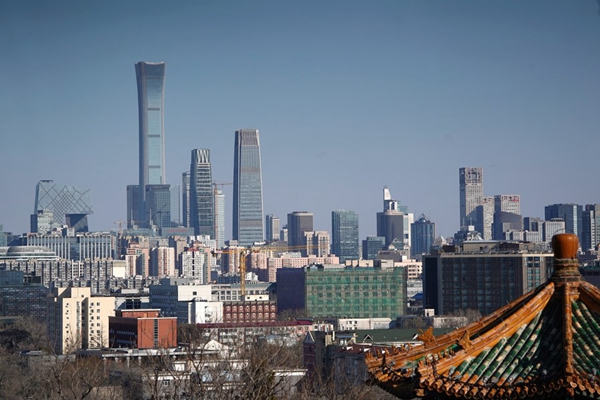China embraces uncertainties, challenges with reform pledge
 0 Comment(s)
0 Comment(s) Print
Print E-mail Xinhua, July 31, 2020
E-mail Xinhua, July 31, 2020

With the global pandemic still unfolding, it remains uncertain how its final impact will be on the world economy. But for China, there is little doubt about how to respond to the forthcoming challenges.
Just like it has worked on China's past economic miracles, reform will continue to be the country's firm answer to a world of change and the key to post-epidemic growth, according to repeated calls from the country's leadership.
China will rely on reforms to tackle changing situations and open up new prospects, while encouraging exploration in key spheres, according to a recent meeting of the central committee for deepening overall reform.
A symposium with entrepreneurs last week stressed the need to foster new advantages for future development in the face of an external environment characterized by rising protectionism, global economic downturn, and a shrinking international market.
While reform has been a remedy for Chinese policymakers to solve fundamental problems, the epidemic will accelerate such a process as it exposed weak links in the country's economic development, analysts say.
Non-stop reform
In China, where reform and opening-up have been driving the country's economic growth for over 40 years, the pace of reform never ceased even at a difficult time of the epidemic outbreak.
A review of China's major reform moves in the past six months reveals clues to the country's endeavor to foster new opportunities amid challenges, and seek deeper involvement in the global economy.
Two overarching plans unveiled in April and May - one on the market-based allocation of resources, and the other on improving the socialist market economy - both centered on protecting the market's role in the Chinese economy to nurture the growth of both domestic and foreign-funded companies alike.
The master plan on building the southern island province of Hainan into a globally influential free trade port, released in early June, showed China experimenting with further opening-up measures in areas including trade, investment, logistics, financial services, personnel travel, and taxation on a par with the most advanced free trade ports worldwide, with many of the policy details hammered out within a month.
In late June, China shortened the negative list for foreign investment again, slashing the number of sectors that are off-limits for foreign investors to 33, down from 40 in the 2019 version.
As a result of these persistent endeavors, a World Bank report released this week said China's recent acceleration in business reforms has helped the country become the top reformer among large economies in the 2005-2020 period.
The high-level leadership and ownership of the reform agenda, as well as strong enforcement of the reform agenda and accountability for results, were among the key drivers of China's success, according to the report.
Key sectors to look at
At the latest meeting of the central committee for deepening overall reform, plans were outlined to reform sectors ranging from state-owned enterprises (SOEs), the rural homestead system, to the integrated development of new-generation information technology and the manufacturing industry.
The meeting, which approved a three-year action plan for SOE reform, underlined efforts to optimize the layout and structure of the state-owned economy to make it more competitive, innovative, controllable, influential, and more able to withstand risks.
Li Xunlei, chief economist of Zhongtai Securities, said in a research note that one of the focal points of China's future reform is to improve the relations between the government, enterprises, and the household sectors.
With regards to the enterprise sector, Li expects the SOEs and banks to make further interest concessions to private firms and non-financial enterprises respectively, citing an example that in 2019, the SOEs handed over more profits to support China's 2-trillion-yuan (about 286 billion U.S. dollars) tax and fee reductions.
Meanwhile, Liu Shijin, an economist with the China Development Research Foundation, has called for deepening reforms in the rural land system, as well as in spatial planning and the allocation of public resources to let the market play a decisive role in the allocation of resources.
Wang Yiming, former deputy director of the Development Research Center of the State Council, also underscored the need to push forward supply-side reforms so that the production factors would flow to sectors with better efficiencies.
Wang said innovation will be another highly-contested area in the post-epidemic era, especially those concerning the digital economy, which demonstrated strong resilience against the virus impact in past months.
New industries, such as big data and artificial intelligence, are likely to redefine global labor distribution and comparative advantages, and extend a broad and extensive influence on people's lives and work, he said.
The more difficulties and challenges China faces, the greater attention should be paid to deepening reform, Wang said, noting that the epidemic shall serve as a "window of opportunity" to push reform in key areas and solve structural and institutional problems.






Go to Forum >>0 Comment(s)